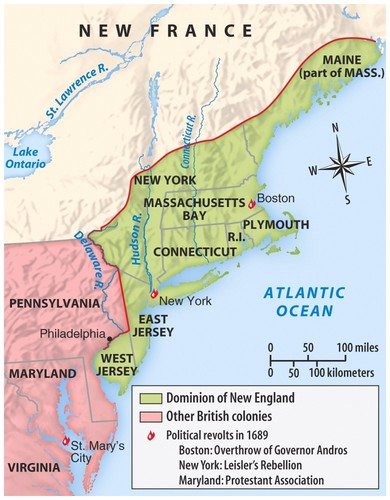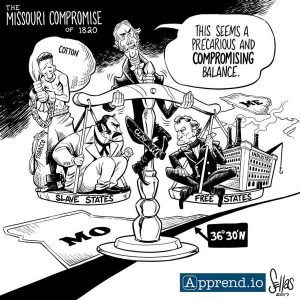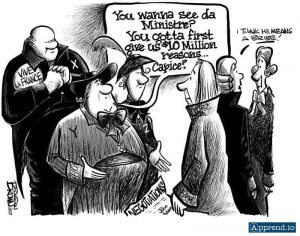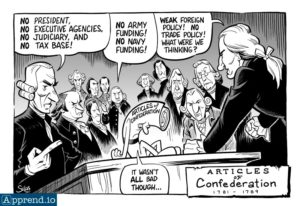Declaration Agains the Dominion of New England
Dominion of New England admin@apprend.io 2019-02-21T21:09:xx+00:00
Dominion of New England for APUSH

Dominion of New England
The Rule of New England was a marriage of several New England colonies formed past King James 2 of England in 1686 and was function of a larger plan to tighten British administration of the colonies. The Dominion formed a megacolony and accomplished three purposes:
- Strengthened colonial defence force from Native American attacks
- Collected taxes more than efficiently past enforcing the Navigation Acts
- Established more direct control over the New England colonies
The original colonies included Massachusetts, New Hampshire, Maine, Plymouth, Rhode Island, and Connecticut. 2 years later in 1868, New York and New Jersey were added.
Only Why a Dominion?
1: Rex Philip Started a War
According to Rex James 2, the Rule of New England was established to protect colonists from Native attacks. The human relationship between the colonists and the Native Americans began amicably, as New England relied upon Native Americans for their survival. However, as the colonists continued to spread inland, a conflict was inevitable. In 1675, a Wampanoag Indian called King Philip by the English, led a coalition, and attacked villages in New England. King Philip's group attacked 52 Puritan towns over the course of one year, killing 600 colonists and 3,000 Native Americans. The attacks became known as King Philip's War and solidified England's worries about securing the New England colonies from further Indian conflicts. Male monarch Philip's War justified England's plan to station more British troops in the colonies for protection.
King Philip's War solidified England's worries about securing the New England colonies from farther Indian conflicts.
Two: Mercantilism, Mercantilism, Mercantilism
The Dominion of New England was to enforce the Navigation Acts that were initially passed in 1651.
Another reason the Dominion of New England was to enforce the Navigation Acts that were initially passed in 1651. The Navigation Acts controlled colonial trade with England and included a list of enumerated goods that colonists were not allowed to manufacture. More Navigation Acts followed in 1660 to 1673 that further restricted colonial trade so that all goods from the colonies had to be shipped simply to England or other English language colonies. Colonists were not allowed to sell their goods directly to other nations, nor could they buy products directly from other countries without being sent to England first. All of these Acts were designed to raise revenue for England and to do good English language businessmen. Enforcing the Navigation Acts was resisted by colonists who had already established trade relationships with Spanish and Dutch merchants. Every bit a outcome, many colonists resorted to smuggling, creating a black market of goods that was largely disregarded until the end of the French and Indian War. A new court was established in Boston to enforce the Navigation Acts. Some colonists rebelled by refusing to pay taxes and were fined and jailed. With 1 megacolony centered in Boston, the English hoped to reduce smuggling and control all colonial trade.
Enforcing the Navigation Acts was resisted by colonists who had already established trade relationships with Spanish and Dutch merchants.
Three: Power, Power, Power
Probably the nearly pregnant reason that King James formed the Dominion of New England was to found more straight control over the New England colonies. Even earlier the reign of King James, the British wanted authority over the colonies. The British enacted many unsuccessful attempts to exercise more control of the colonies, but each attempt was met with such resistance that Britain repealed whatever measure they enacted.
Britain'due south goal with the Dominion of New England was to conglomerate all the governance of the colonies nether one governor
Britain'due south goal with the Dominion of New England was to conglomerate all the governance of the colonies under one governor, a governor that would be able to properly enforce British laws. Before the Dominion was created, New England colonies were ruled under private charters that allowed for cocky-authorities. The colonists greatly resented the loss of their individual territories and cocky-rule to one megacolony like the Dominion of New England.
The Cardinal to Power? Bureaucracy!
At the center of the Dominion was its governor, Sir Edmund Andros who was appointed past the king and was assisted by a quango composed of representatives from each of the colonies. Council members were not paid nor compensated for their travel to the Dominion's capital of Boston, therefore most councils were dominated past representatives from Massachusetts, and in most cases, this left Andros to rule the Dominion alone. Andros may have been i of the most resented officials of the colonies. Andros established the Church of England as the official religion of the Dominion, which undercut Puritan behavior. He restricted local courts, the printing, and schools. In order to diminish local authorisation, Andros restricted the power of boondocks meetings and then imposed taxes. Colonists constitute this virtually objectionable considering they were being taxed without their consent. Since England had revoked colonial charters, one-time land titles were questioned. The land belonged to the King and landowners had to petition the authorities for new titles. The title work involved taxes, fees, and sometimes bribes to officials.
Edmund Andros restricted local courts, the printing, and schools. In gild to diminish local authority, Andros restricted the power of town meetings and and so imposed taxes.
Problem at Home… Across the Swimming
The years 1675 to 1700 represented times of turmoil in England. The British Parliament believed that James II centralized too much authority and was worried that he wanted to make England a Catholic nation. By 1689, James Ii was forced to forsake the throne and was replaced by his daughter, Mary, and her husband, William of Orange. This peaceful transfer of power was called the "Glorious Revolution." English Parliament was able to permanently limit the monarch'south ability and established parliamentary command over taxation, laws, and the courts.
The English Monarchs included:
- James I: 1603-1625
- Charles I: 1625-1649
- Oliver Cromwell (English Interregnum): 1649-1660
- Charles II "Restoration": 1660-1685
- James 2: 1685-1688
- ("Glorious Revolution": James Two is forced to abdicate)
- William 3 and Mary Two: 1689-1702
A Glorious American Revolt
Once news of the Glorious Revolution hitting New England, the colonists erupted into a anarchism and, through the anarchism, rid themselves of Andros and Dominion.
Once news of the Glorious Revolution hit New England, the colonists erupted into a riot and, through the riot, rid themselves of Andros and Rule. The Glorious Revolution had set the significant precedent for the removal of a monarch. A mob formed in Boston on April 18, 1689, and fearing for his life, Andros returned to England. Most of the colonies reverted to their original forms of governing with a few changes. Massachusetts was the most affected colony and was made a regal colony in 1691. Every bit a royal colony, Massachusetts was nether direct command of the King and ruled by a royal governor who was appointed by the male monarch. The new royal charter required Massachusetts to admit liberty of religion and concluded religious restriction on voting. In the instance of Massachusetts, the Rule of New England caused society to motion towards beingness more secular.
The Rule of New England caused lodge to move towards being more secular.
Conclusion
The Dominion of New England was a failed attempt past the British to assert control over its colonies. The colonists resented the overbearing rule of Sir Edmund Andros and eventually, a mob forced him to exit Boston and his postal service equally governor of the Dominion. Overall, the Glorious Revolution had more long term effects in the colonies. In 1689, earlier William and Mary assumed the throne, England passed the Beak of Rights which guaranteed rights to citizens and established a limited constitutional monarchy. Among other provisions of the Bill of Rights was the idea that taxes could not be raised without the authorisation of Parliament. Colonists expected the same rights as English language subjects. Many of the provisions of the English Bill of Rights were used in the Declaration of Independence.
The Dominion of New England was a failed attempt by the British to assert control over its colonies
The failure of the Dominion of New England ushered in an era of "salutary neglect" in the colonies. Some in England felt that the colonies would flourish economically and provide more in the style of profits if left solitary and that the Navigation Acts were non enforced. Additionally, with such vast territories to patrol, the Navigation Acts were likewise expensive to enforce. An unintended consequence of this neglect was the growth of self-government in the colonies. Colonists became less dependent on British appointed governors and more dependent on locally elected representatives. Since British laws were not enforced, colonists became accustomed to self-dominion. When the era of salutary fail ended with the British victory in the French and Indian State of war, the colonists were set to resist British rule and Parliament'south rights to tax.
Proceed Learning!
The Missouri Compromise

Bacon's Rebellion

Mercantilism

The XYZ Affair

Manufactures of Confederation

Source: https://apprend.io/apush/period-2/dominion-of-new-england/
Belum ada Komentar untuk "Declaration Agains the Dominion of New England"
Posting Komentar